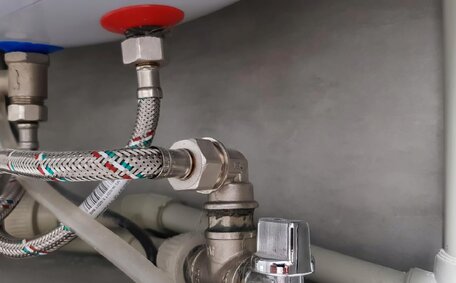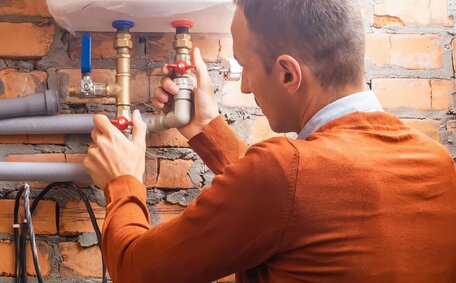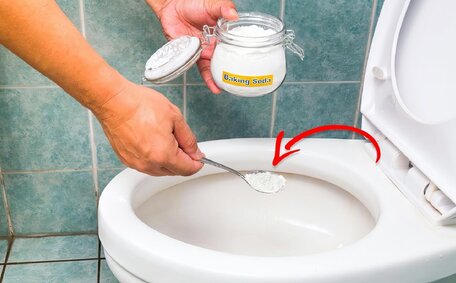Introduction: Understanding the Loss of Hot Water in Your Home
Hot water is vital for daily activities such as bathing, washing, and cooking. A loss of hot water can greatly disrupt household routines and cause significant inconvenience.
There are several common culprits behind hot water issues:
- Faulty pilots or blown fuses stopping hot water heater units from firing up
- Broken heating elements failing to warm water
- Water leak issues, such as pipes or valves reducing supply
- Sediment build-up inside water tanks
- Interruptions to water gas or electricity hindering operation
Australians use roughly 200 litres of hot water daily, making quick diagnoses and solutions essential. DIY troubleshooting steps can resolve basic problems, but for complex electrical or gas-related faults, assistance from qualified plumbers or electricians is recommended.
This guide covers suggested checks and solutions for restored hot water your flow in homes with electric water and gas systems. But first up, let’s explore why hot water is so essential.
Checking your water heater and systems
When there no hot water your supply fails, the first step is verifying whether the issue lies with the hot water system itself or the water lines and taps. Begin by assessing if cold water flows normally from taps, as reduced flow indicates an external supply problem, not a heating issue.
For gas water heaters, check the pilot light status. On gas heaters ensure the pilot is lit - carefully attempt to relight your pilot if extinguished. Visually inspect electric heater elements for any signs of burnout.
Inspect the physical unit thoroughly for leaks, corrosion and weird noises during operation which may indicate imminent failure.
To assess water pressure, draw a bucket of water from the hot tap; low flow suggests obstructions in the plumbing system.
Document the water heater model, age, type (electric or gas), size and energy rating. This aids troubleshooting and replacement if faulty. Note down any recent disruptions to electrical power or gas supply.
If external issues aren’t the culprit, assess your hot water system. For electric units, resetting the thermostat could resolve persistent problems. Try carefully draining the tank too since sediment accumulation reduces heating efficiency over time.
Checking fuses and circuit breakers
For electric hot water systems, inspect the fuses or circuit breakers linked to the unit. Identify the fuse or circuit breaker on your main switchboard that is connected to your hot water heater. If you’re unsure, switching off circuits one by one until the hot water cuts out can help pinpoint the correct one.
Check if the fuse has blown or the circuit breaker has tripped to the 'off’ position. After turning off the power, replace any blown fuses with new ones of identical amperage. Or for a circuit breaker, simply switch it back to the 'on’ position.
If the new fuse blows immediately or the breaker re-trips, this signifies one of the common causes for an electrical fault exists within your circuit. Any strange smells or noises also demand urgent attention. Never poke around inside electrical units due to electrocution hazards - always engage a licenced electrician.
Also note down the power rating and operating current marked on the hot water unit’s electrical info sticker. Upgrading to a higher rated fuse/breaker or system may be needed to meet current demands.
Checking pilot lights on gas systems
For gas water heaters, check that the pilot light is lit as a fundamental troubleshooting measure. The pilot is a small flame within the unit that ignites the main gas burner to heat the heater tank. If it’s extinguished, your hot water supply will stop.
Locate the access panel and viewing window showing the pilot light - take care opening any panels of gas appliances.
Confirm whether the pilot flame is visible; if not, the automatic safety valve may have been activated. Attempt relighting it by depressing the reset button and triggering the ignitor. Refer to manufacturer guidelines for specific procedures.
If the pilot fails to stay lit, do not continuously attempt to relight it as this can cause raw gas buildup.
Shut off the gas inlet tap and ventilate the area by opening windows and doors. Check for leaks using gas detector spray around joints and valves. Give us a ring, a licenced gas fitter if you detect leaks or smell gas.
A consistently extinguished pilot can signify issues like blocked burner tubes, rust accumulation, draught problems or worn thermocouples needing replacement - jobs best left to professionals. Record any error codes flashing which help diagnose faults.
Checking thermostats and heating elements
Thermostats and heating elements are critical components that work together to control and generate heat for hot water supply in electric storage tanks.
The thermostat senses water temperature and switches the heating elements on or off accordingly to maintain the desired heat level. Locate the thermostat on your hot water heater and check the temperature is correctly set to at least 60°C. Refer to your system specs for technical guidance.
Look for burn marks or breakages on the rod-shaped heating elements that could impair heating. Sediment accumulation on elements can also inhibit heat transfer. Gently clean any grime or scale if present, avoiding damage to the fragile wiring inside.
If the thermostat or elements are very old consider replacement, as these parts do wear out over time. Alternatively, inspecting your hot water unit manual or data plate for specifications may provide insight into specific fault conditions.
Troubleshooting electric hot water issues
Common electric hot water troubles include tripped high limit cut-outs, failed heating elements, and faulty thermostats. To reset, unplug the unit and push the cut-out switch back in once the water has sufficiently cooled. However, if it continues to trip repeatedly, the thermostat or element likely need replacing.
A cut-out switch is a safety device that disables the electric heating element if the water overheats above a set temperature, indicated by a button popping out.
Attempt de-scaling, but worn elements need professional replacement. If thermostats do not properly regulate temperature, this will impact hot water availability.
Inspect thermostats for working properly or simply replace these inexpensive parts as a process of elimination.
Troubleshooting gas hot water issues
Gas hot water systems rely on a gas burner heating a water heater tank or heating water instantly as it flows through. Pilot lights play a critical safety role igniting the main burners in your hot water tank.
Common gas hot water problems include blocked drains and:
- Extinguished pilot light - Follow manufacturer relighting procedures carefully after ventilating area
- Gas leaks - Turn off mains supply and call a licenced gas fitter urgently if leaks are detected
- Faulty gas control valves - Valves worn over time can fail to open/close properly when hot water taps are operated
- Insufficient gas supply/pressure - Low supply pressure will hamper burner output. Contact your gas provider if supply loss is suspected
- Thermocouple issues - Small thermocouples generate electric current enabling the pilot to operate. Replacements may be needed if constantly malfunctioning
Due to the risks of gas leaks or ignition, it’s key to engage qualified technicians for gas hot water system repairs.
When to call a professional
There are a few key times when it’s best to stop DIY troubleshooting and call in a professional plumber or electrician:
- You detect a gas leak or smell gas anywhere - shut off supply and vacate the area until a certified gas fitter deems it safe
- The water heater pilot light repeatedly goes out and won’t stay lit after following relighting procedures
- You notice strange smells, noises, error code flashes or leaking water suggesting unit failure or hazards
- Tripped safety switches, fuses or breakers instantly re-trip after resetting or replacing
- Electric faults, strange readings on multimeters during testing electrical circuits
- No ignition at all or elements failing to heat up water as expected
- Pressure relief valve constantly dripping or draining may indicate excessive tank pressure
- If you’ve inspection all lines, fixtures and the water heater showing no faults - supply issues could exist externally
Our team, your local experts at North Epping Plumbing, deal with all water heater breakdowns and can troubleshoot faults professionally. Rather than taking risks tackling complex electrical or gas repairs, trust our licenced experts to diagnose and rapidly reinstate your hot water supply.
Plumber vs electrician - who to contact
The decision to call a plumber or electrician when facing hot water problems hinges on identifying the root cause.
Contact a licenced electrician if the problem points to an electrical malfunction such as:
- Tripped safety switches or circuit breakers related to the hot water unit
- Burnt out heating elements
- Faulty thermostats failing to regulate water temperature
Contact licenced plumbers for issues such as:
- Leakages from tanks, valves or fittings
- Blocked water lines or stuck closed valves hampering flow
- Extinguished pilot lights on gas systems
- Suspected issues with gas lines, valves or pressure
The qualified team at North Epping Plumbing can expertly diagnose and address any hot water system faults. If you need to find out if the specific issue remains unclear during inspection, we can fix and identify whether plumbing or electrical repairs take priority in restoring your hot water supply.
Preventative maintenance
Regular maintenance on your hot water system is crucial for reducing the risk of breakdowns and extending its operational life. Simple preventative actions include:
- Draining your electric or gas hot water system annually to flush out sediment accumulation
- Descale electric heating elements to maximise heat transfer
- Annually check and tighten valves, pipe fittings, and seals if you find any leaks
- Annually test the pressure relief valve to ensure correct water pressure
- Make sure to visually inspect tanks for corrosion – replace anodes in electric units if corroded
- Clean burner assemblies and thermocouples on gas systems
- Test functionality of electrical components like thermostats
A yearly inspection of your hot water unit by a qualified professional is highly recommended. They will conduct thorough condition testing to spot potential problems early, maximising the system’s operational life. Response times average around 2 hours for emergency hot water repairs according to the Residential Tenancies Authority.
What to do in a hot water emergency
When faced with a hot water emergency due to system failure or outage, the priority is restoring supply rapidly while observing safety. However, certain steps should be taken while awaiting repairs.
Start by tackling any immediate hazards, such as leaks or gas odours, and switch off the water heater to prevent further damage or danger. This prevents damage or dangerous ignition. Use caution with electrical devices around wet areas.
Ensure that cold water is running properly from taps, and take brief showers if necessary. Boiling water in kettles can provide a temporary hot water source. For alternative showering options, consider facilities like swimming pools, friends’ homes, or local gyms.
If you can’t resolve the issue, contact a licensed professional immediately for emergency assistance. Response must occur within 24 hours under Residential Tenancies Authority regulations.
During repairs, don’t reactivate gas/electrical connections until technicians advise it’s safe. Give clear access information for a smooth system inspection. For complex faults, upgrading to new hot water heaters may be required over fixes to restore reliable hot water supply.
Summary and next steps
In conclusion, numerous factors can lead to hot water supply failure, ranging from blown fuses to malfunctioning gas valves. Carefully troubleshooting issues step-by-step based on system type can help homeowners restore hot water themselves or determine if professional assistance is needed for complex repairs.
Safety should be the number one priority - do not take risks tackling electrical or gas-related faults. Seek qualified help in the Hills District immediately if leaks, hazards or other dangers are present.
Annual flushing of tanks and testing of components as part of preventative maintenance can minimise the likelihood of system failures.
If you’ve followed all the DIY steps in this guide and issues persist, reach out to North Epping Plumbing at 1300 349 338 or [email protected] for expert assistance.
Our licenced plumbers and electricians can rapidly diagnose issues and reinstate reliable hot water supply to your property.






